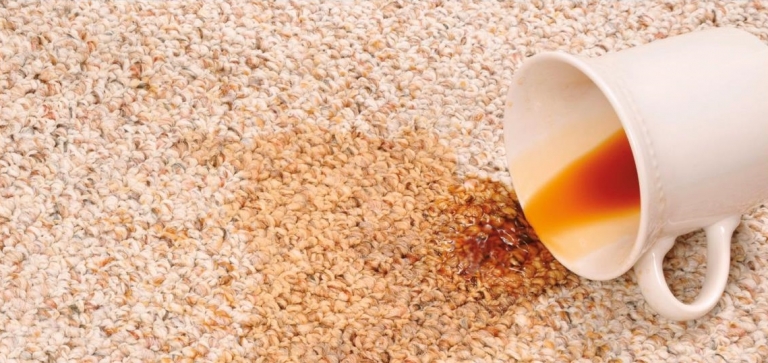You see it on television and internet commercials all the time, a glass of wine or fruit punch being spilled on a beautiful, new carpet. The guests are mortified, but the smiling hostess blots up the spill with a towel, leaving the carpet clean and spot-free. Disaster averted, the party continues.
But is this really the way it works? Well, yes and no.
Modern Fabric Protectors
Virtually all carpets manufactured today feature some type of protector application. These specialized fluoropolymers have names like Permashield®, R2X®, Repel®, and of course, DuPont Teflon® and 3M Scotchgard®. In addition, almost all nylon carpets are treated with special stain blockers called acid dye resistors to help prevent permanent staining by common food and beverage spills.
When a carpet is new, the factory-applied protectors perform extremely well. Liquid spills bead up on the surface of the carpet yarns. But as a carpet ages with traffic, vacuuming and even professional cleaning, the protection wears off and is reduced significantly, requiring reapplication from time to time.
How Protectors Keep Your Carpets Looking Good?
You may wonder how these miracle polymers work. Well, they work partially through surface energy, which is similar to surface tension. You may have heard of surface tension. In fact, you have likely seen a demonstration of this phenomenon in action when a glass is filled with water so that the water rises slightly above the rim of the glass without spilling over. If you are careful, you can actually float a metal paper clip on the surface of the water, too. This is due to surface tension.
Surface tension is used to describe what happens at the surface of liquids. But solid materials like carpet fibers have a property called surface energy. Surface energy is not easily explained or demonstrated, so let’s just say that surface energy determines how well liquid can penetrate a solid. If a liquid is spilled onto a fiber that has high surface energy, it will penetrate easily
If a liquid is spilled on a fiber with low surface energy it will tend not to penetrate. Fluoropolymers work by reducing the surface energy of a material. Protectors not only shield your carpet from water-based spills, but also from oils, grease and dry particles. This means that you have more time to blot-up spills or tracked-in soils. Vacuuming becomes more efficient because dry soils are repelled. Oily and sticky soils are also repelled so they don’t attract dry soils. That is important because it is the dry, gritty particles that do the most damage to your carpets by scratching and dulling the fibers just like sandpaper. All of this means that carpets which are regularly cleaned and protected last longer and look cleaner, brighter and newer.
Re-Protecting Your Carpet
Like any topical coating, carpet protectors wear away with age and use. Laboratory testing reveals that protection is reduced by 30% or more each year. Even professional cleaning, important as it is, removes a little bit of the remaining protector.
The fact is that your carpets are only new once. When the fibers have been scratched and dulled, they will never look as colorful and pretty as they did when new. Protectors help to prevent this damage and keep carpets looking newer longer. That’s why major carpet manufacturers recommend annual cleaning and protector application on most residential carpets. Keep that in mind the next time you invite Bluegreen to clean your carpets.
